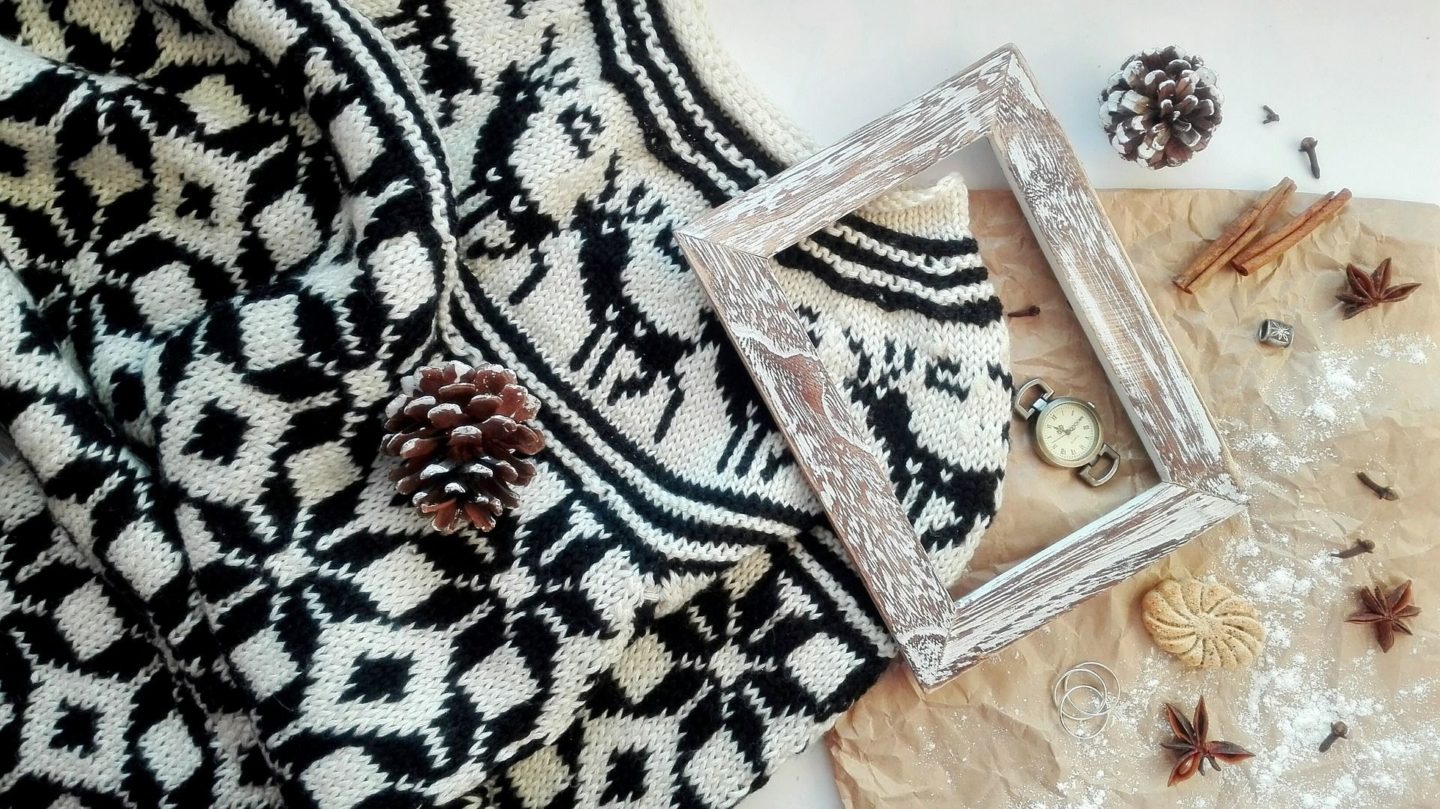
What to wear in Lapland in winter? I think this is the question most people ask when they want to book a trip to Lapland. Don’t be afraid of the cold, just be well equipped and informed to make your stay an incredible and unforgettable experience.
Take away those preconceptions, a -15 degrees in Lapland is bearable because the cold is dry. A temperature of – 5 degrees in our French regions is sometimes harder to bear because of the humidity. Well, I’m not going to lie to you, -30 degrees and -40 degrees are most noticeable when you’re on the snowmobile, helmet blowing in the wind, or standing still outside listening to the guided tours. Wind can really bring down the temperature! So dress smartly.
First and foremost, avoid as much as possible the use of cotton during activities, because yes, ladies and gentlemen, when you sweat, the wet cotton tee shirt on your back will turn into a frozen tee shirt, with little bits of ice forming and sticking to your skin (I’ve experienced it, and I don’t approve of it at -30 degrees). Here are a few tips on what to wear in Lapland, Canada, Iceland and other cold-weather countries during activities in sub-zero temperatures or extreme cold (above -20 degrees)
We’ve written a few articles about the destination to help you plan your trip to Lapland
- Free and paying activities for children in Rovaniemi
- Observe northern lights
- All our tips fororganize your trip to Lapland Finnish
- From unusual experiences living in Lapland
- What to see and do in Helsinki
- The sauna and kota
- Souvenirs to bring back from Lapland
- Culinary specialities to discover in Lapland
| HOW TO DRESS FOR WINTER IN LAPLAND?
1 | Your basic clothes upstairs
You have to think you’re going to arrange several layers clothing, from the tightest to the widest for both top and bottom. There’s no point in wearing heavy layers, because you need to be comfortable, so that it doesn’t get in the way or pinch when you’re moving around, and so that you don’t look like the Michelin man!
It’s imperative that the body heat can stay and not escape but air can circulate well between layers, you get my drift? This is known as the 3-layer layering technique.
- 1st layer to be worn under main clothing :
Take some technical and breathable undergarments long-sleeved damart style. These thermal garments retain heat and wick moisture away from the body. You can find them at low prices at decathlon, but I haven’t found them all of good quality. After a first machine wash, mine shrunk. As a result it’s an important layer that you will wash often, so don’t neglect them.
I repeat, don’t wear cotton, but fine wool, lightweight or technical garments are still suitable for fighting the cold, as you’re likely to sweat. I particularly like the brands Odlo, Northface, Icebreaker or Norway).
- 2nd layer for warmth: on your first layer, the first damart skin, you put on a thicker, more technical fleece or a very fine feather down jacket, easy to roll up. This second layer should be looser to keep you warm. If it’s not cold, you can wear a thick wool sweater, which will do the trick!
- 3rd layer: it’s essential if you’re very cold, but also in case of strong winds, rain or extreme cold. And off we go with a third, much larger, zipped fleece! Imagine, you’re too hot or on the contrary you’re cold, you can add or remove a layer by choosing a zipped fleece, practical isn’t it? You can also wear a ski jacket as a third layer, depending on the situation.
While a cold-weather suit protects you from the snow by enveloping you from head to toe, it can also be a nuisance on certain activities. That’s why you can wear only your warm parka or ski jacket on top.
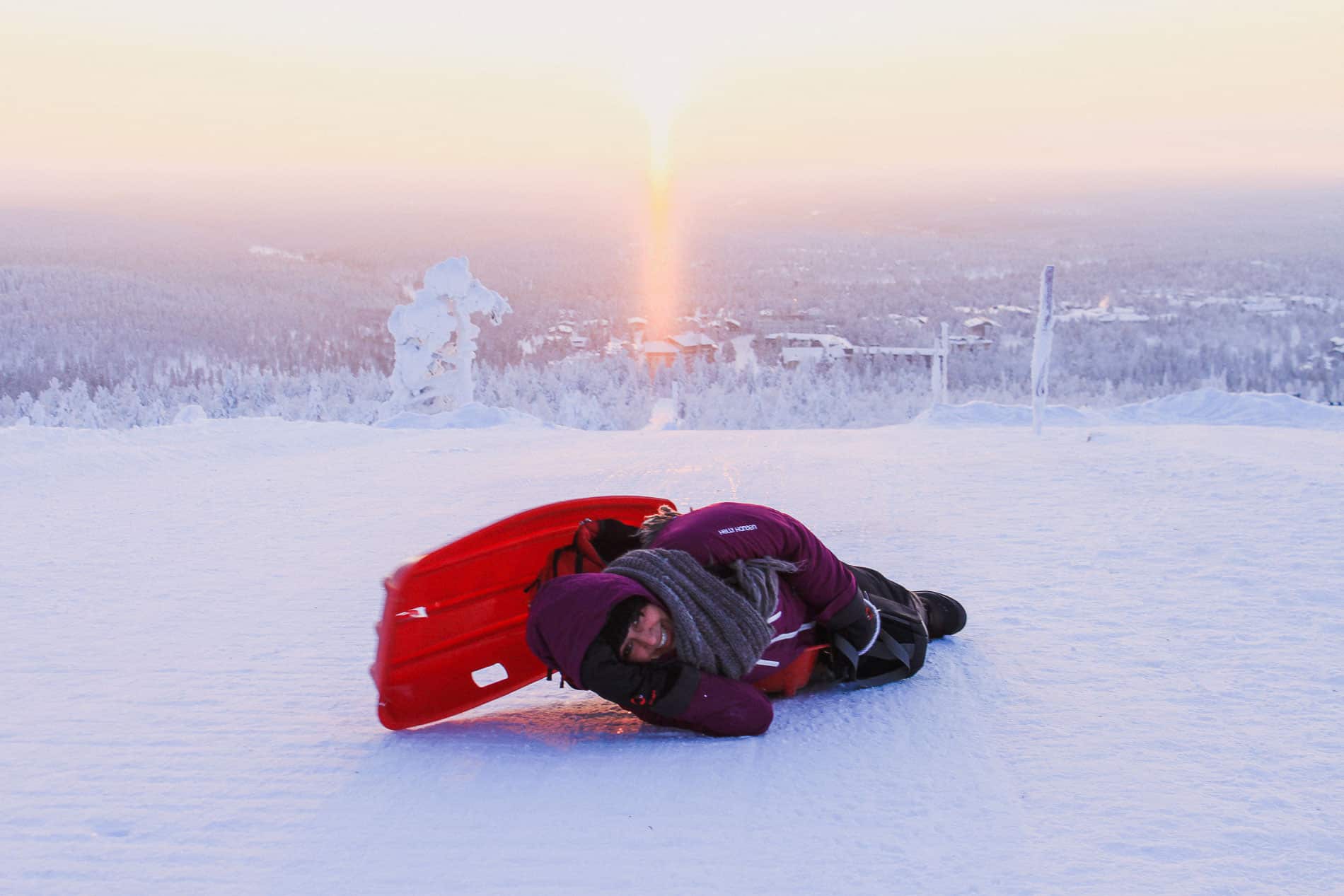
2 | What about the bottom?
It’s the same principle and the same layering technique.
- Trousers
The first layer will be a damart tights/wool to protect you from the cold and insulate heat. Over that, you’ll wear loose-fitting pants like ski socks or soft wool pants, depending on the weather. If it’s really cold, take a light cotton or wool tracksuit to layer over your tights and under your ski socks. Don’t forget that you’ll normally be provided with an anti-cold suit.
- Socks
Forget sports socks, tennis socks, mini socks, or the thin socks recommended by Decathlon… We choose wool socks, thin, thick and technical. There’s no point in putting on layers of socks without letting the air in between – that’s the secret! Choose 3-4 pairs of different sizes, from the smallest to the largest, so that they don’t stick to your feet and your feet can move around in your shoes. You’ll see when your neighbors’ feet turn yellow because the blood is no longer circulating, you’ll think of me because it’s very important to be able to move your little toes in your boots. There’s nothing worse than a sausage foot!
- Shoes
Slightly or even totally high-mounted boots for comfortable walking in the snow and for use with snowshoes. Remember to take them a little larger than your current size, as you’ll be wearing the socks.
- Gloves
I’m not for gloves, but a good pair of mittens! You can buy some very nice ones in the local souvenir stores. I don’t like gloves because the air doesn’t circulate between your fingers and it’s harder to keep warm! So a pair of mittens plus the loaned pair will have to suffice. Don’t buy the thin under-gloves, which are only useful for night shots, northern lights… and more! I was wearing mittens with a finger opening that I bought on the spot!
- Hat or Chapka
In cold countries, it’s important to cover your head and ears to avoid getting sick and freezing. We recommend wool hats, stuffed chapkas and ear muffs. When snowmobiling in very cold weather, I wore a fleece balaclava that covered all my face except my nose, so I could breathe!
- Scarves
Pack a wool or other material scarf in your suitcase too!
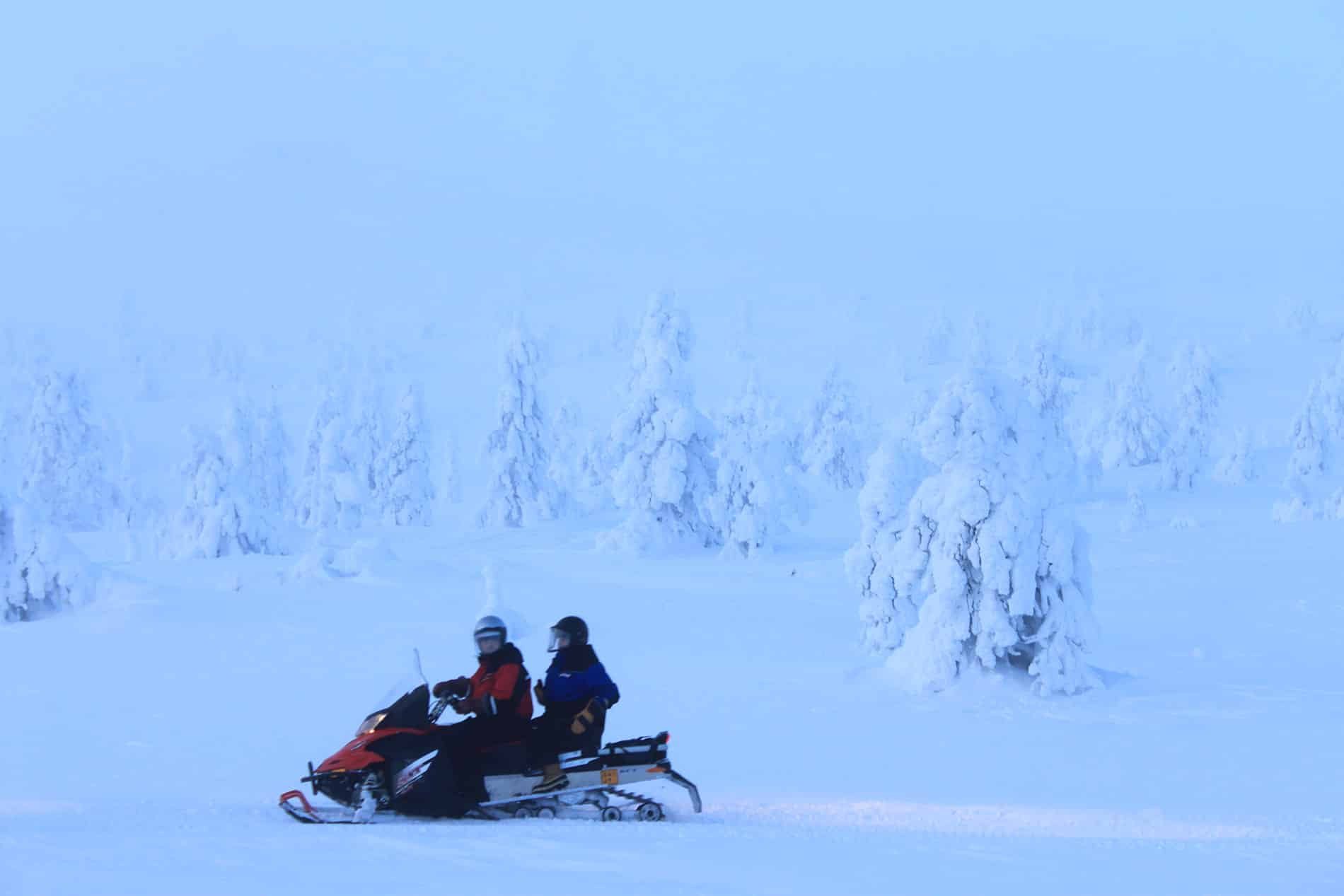
3 | List of equipment for the week, which will be provided by the organization on arrival.
- A pair of boots
- A cold-weather suit for the week to layer over your clothes
- A balaclava
- A pair of oversized mittens
- A helmet
Not all structures provide the same outfits, as they are managed by different owners, but this gives you an idea of what you should have.
| WHAT TO PACK TO SURVIVE THE COLD?
If you follow my advice, you’ll survive the cold without a care in the world. In fact, I find this word rather strong, because you’ll soon realize that the body gets used to anything if it’s well prepared. Take the clothes listed above for the activities and your usual clothes for hanging out at the hotel. And here, you can wear cotton, beautiful little wool sweaters with reindeer, and a pair of boots for walking in the snow.
Jeans aren’t necessarily useful or suitable in very cold weather, because they stick to the skin and hurt like hell! You only put it in the hotel in front of the fireplace!
In your toiletry bag, it’s especially important to have a few medicines for headaches and stomach aches, but above all a moisturizing night cream. I say night because I strongly advise against put anything water-based on your skin (face and body) in the morning. Water freezes on contact with the cold (even particles, yes, yes), the skin pulls, cracks and crevices appear (I saw this on one person). Wash your eyes with absorbent cotton lightly moistened with water.. The shower is taken in the evening and the cream is applied immediately afterwards to moisturize your skin. Ladies, avoid mascara in very cold weather too, as it contains water and is therefore unpleasant on the lashes.
You can also take along foot warmers, used when you spend a lot of time outdoors, such as when observing the northern lights. In any case, I advise you not to remain static. Get your blood flowing by moving around, it’ll warm you up!
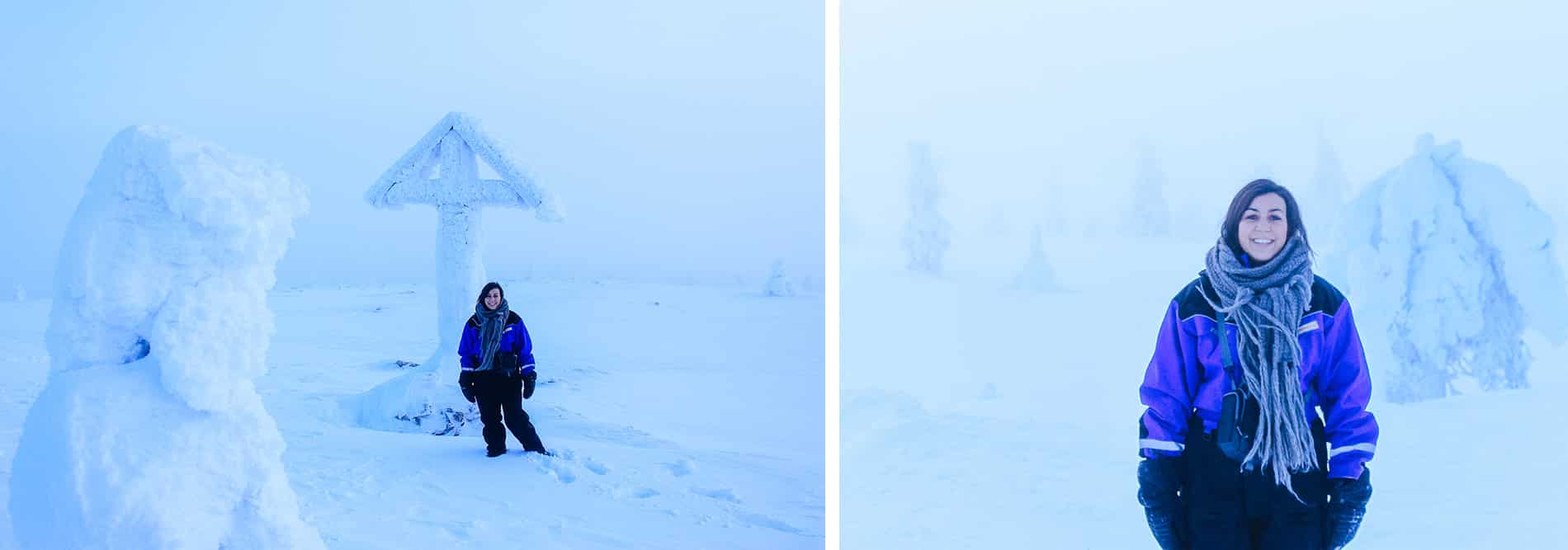
| WHAT TO PACK IN YOUR BACKPACK FOR ACTIVITIES?
Little tip, I always had with me in the backpack, a zipped fleece in addition. Why? if you’re surprised by the cold, you can add another layer, and if you’re hot, you can remove one.
I had bought heaters but I tried them once in -4O degrees. They do provide warmth, but they’re only useful if you’re really cold. As soon as you don’t stay mobile, you activate the blood circulation so you don’t feel so cold! Please note that heaters are heated 30 minutes before you leave, not once you’re on site during the activity.
For the more adventurous, you can take a flashlight and a knife with you, but if your activities are supervised, the guide will have everything with him.
Finally, remember to keep your cell phone and your camera. In general, they don’t like temperature differences! The best thing to do is either keep it close to you in the heat or take it out when you need to take a photo. When you arrive at the hotel, don’t take it out straight away, and let it return to room temperature naturally, to avoid fogging.
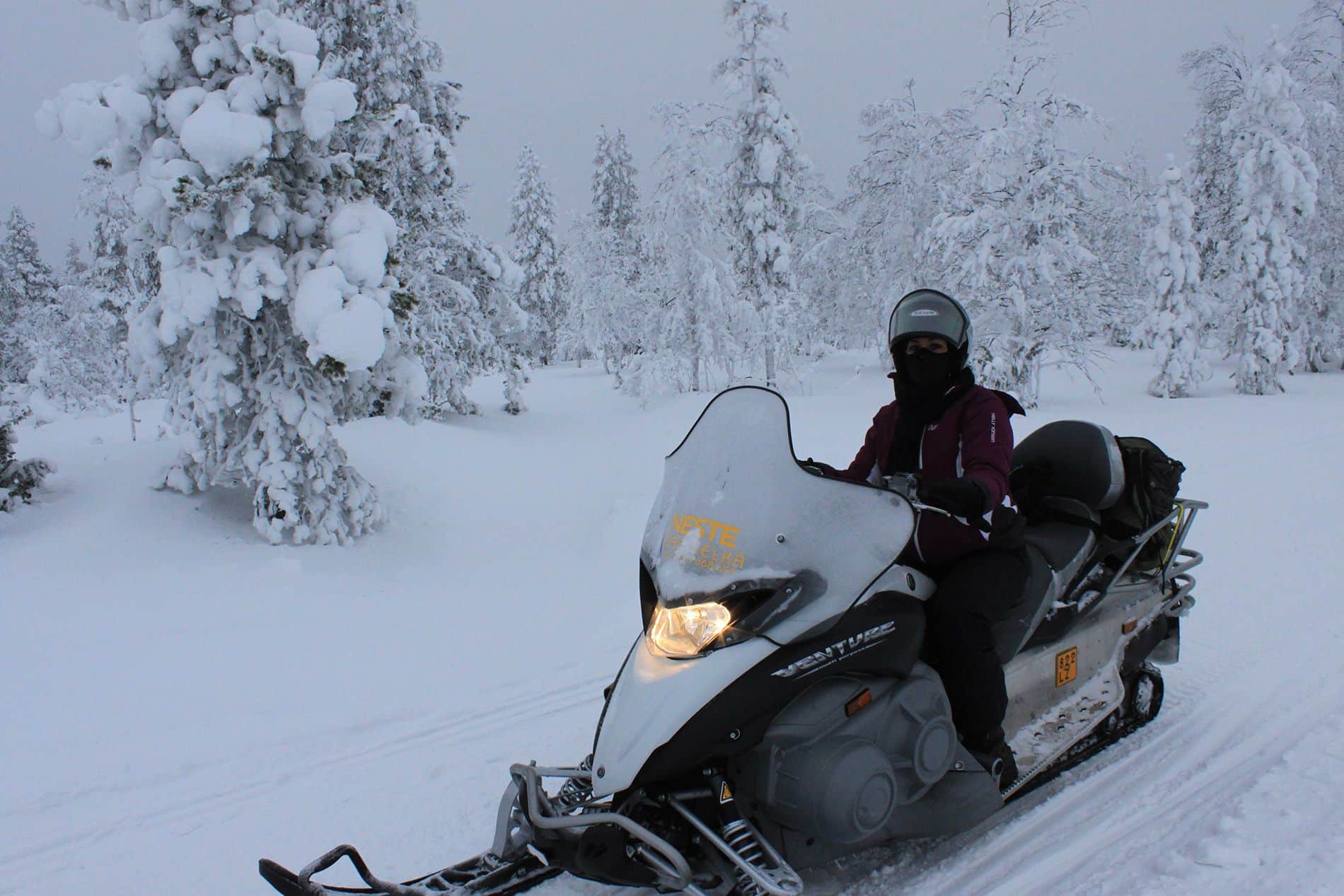
To request a quote for this destination, please read the article on our tips for organizing your trip in Lapland, then write to me at contact@mademoiselle-voyage.fr
Discover our other articles on Finland and Lapland:
- Free and paying activities for children in Rovaniemi
- Observe northern lights
- All our tips fororganize your trip to Lapland Finnish
- From unusual experiences living in Lapland
- What to see and do in Helsinki
- The sauna and kota
- Souvenirs to bring back from Lapland
- Culinary specialities to discover in Lapland
